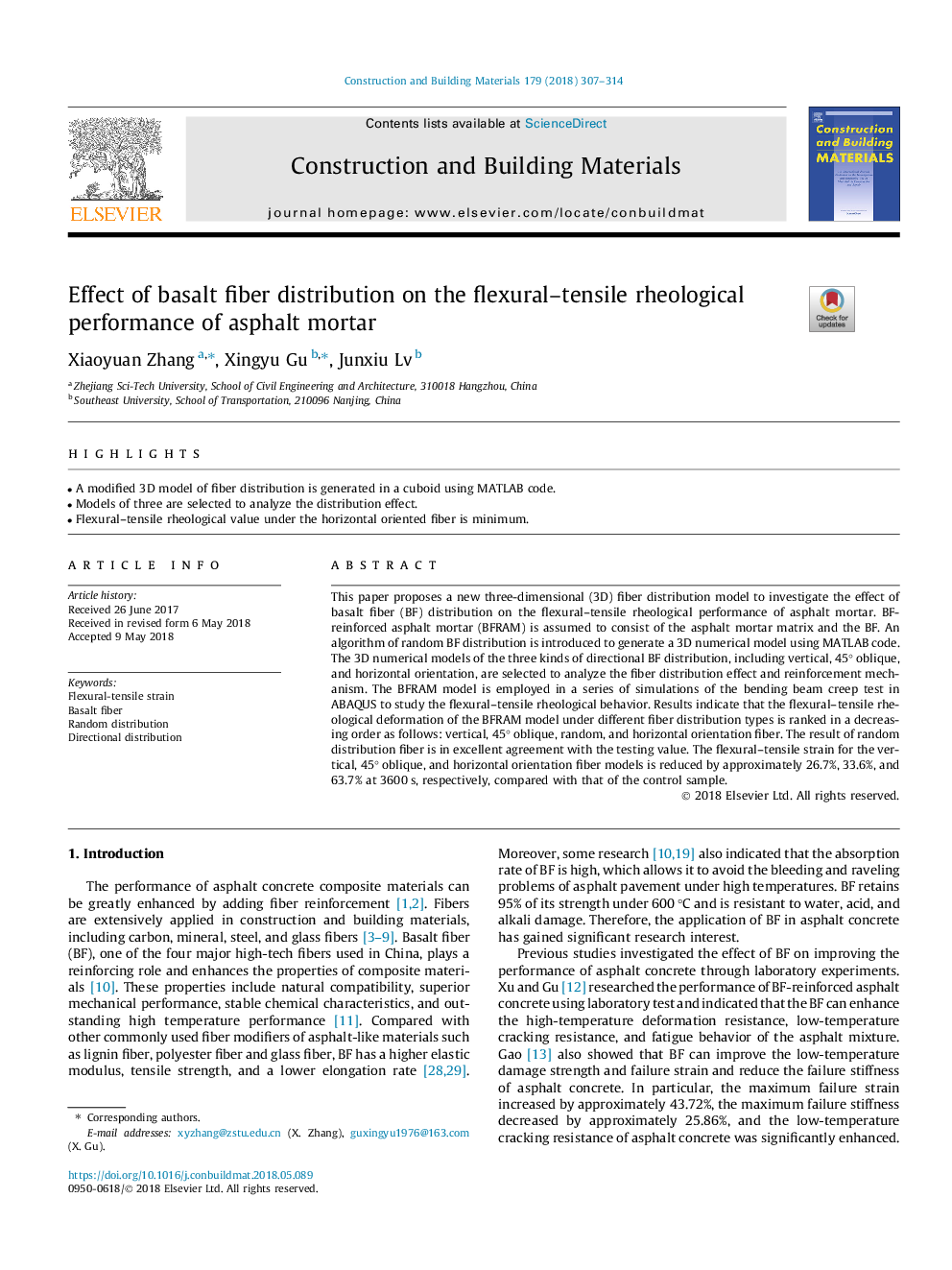| Article ID | Journal | Published Year | Pages | File Type |
|---|---|---|---|---|
| 6712728 | Construction and Building Materials | 2018 | 8 Pages |
Abstract
This paper proposes a new three-dimensional (3D) fiber distribution model to investigate the effect of basalt fiber (BF) distribution on the flexural-tensile rheological performance of asphalt mortar. BF-reinforced asphalt mortar (BFRAM) is assumed to consist of the asphalt mortar matrix and the BF. An algorithm of random BF distribution is introduced to generate a 3D numerical model using MATLAB code. The 3D numerical models of the three kinds of directional BF distribution, including vertical, 45° oblique, and horizontal orientation, are selected to analyze the fiber distribution effect and reinforcement mechanism. The BFRAM model is employed in a series of simulations of the bending beam creep test in ABAQUS to study the flexural-tensile rheological behavior. Results indicate that the flexural-tensile rheological deformation of the BFRAM model under different fiber distribution types is ranked in a decreasing order as follows: vertical, 45° oblique, random, and horizontal orientation fiber. The result of random distribution fiber is in excellent agreement with the testing value. The flexural-tensile strain for the vertical, 45° oblique, and horizontal orientation fiber models is reduced by approximately 26.7%, 33.6%, and 63.7% at 3600â¯s, respectively, compared with that of the control sample.
Related Topics
Physical Sciences and Engineering
Engineering
Civil and Structural Engineering
Authors
Xiaoyuan Zhang, Xingyu Gu, Junxiu Lv,
